Marconi Eras
The Belmar Station Photos on file in the G.H. Clark Collection: Smithsonian InstitutionThe Belmar Station Photos on file in the G.H. Clark Collection: Smithsonian Institution
The Smithsonian Institution, National Museum of American History, Behring Center, Archives Center has material on Camp Evans when it was the Belmar High-Power Marconi Wireless Station, Naval Radio Station, and finally the RCA Radio Station at Belmar. The creator of the Smithsonian ‘Radioanna’ collection, George H. Clark, worked at the Belmar station during his early collection years.
Mr. Robert S. Harding of the Archives Center, National Museum of American History, Smithsonian Institution – has created an excellent Finding Aid for the George H. Clark Radioanna Collection. The 800 box collection is a major primary source of information of the early days of wireless and radio development.
A section from Mr. Harding’s biography of George H. Clark
In July 1919, after resigning from the Navy, Clark joined the engineering staff of the Marconi Telegraph Company of America, which became part of the Radio Corporation of America (RCA) later the same year. His first work was at Belmar and Lakewood, New Jersey, assisting the chief engineer, Roy A. Weagant, in his development of circuits to reduce the interference caused by static (static reduction). Clark and his wife were assigned to the unheated Engineer’s Cottage. His wife decided not to stay and left for Florida. Clark moved his trunks of wireless material to the heated RCA hotel at Belmar and spent most of the winter’s pasting. As Clark mentions, ‘From that time on I was wedded to scraps.
Belmar Station, aka Evans Signal Laboratory.
Through these rooms some of the most important messages of WWI were dispatched to and from Washington and Europe when the U.S. Navy operated the station. A. H. Taylor was the Trans-Atlantic Communications officer in charge of the station during the war. Later he would play a key roll in the development of Naval radar in WWII. All the equipment was removed by 1926 when the station was sold as obsolete. Local lore says the building was used to store liquor brought in under the cover of darkness by ‘run-runners’ during prohibition. The interior was gutted for classroom and later dormitory space in 1936 for students of The Kings College. During WWII the building would serve the nation again as a part of the Signal Corps Radar laboratory. A 1949 article would outline the history of the building and nearby Marconi balancing towers. As of 2002, the well-constructed building is in good structural shape for a 1914 completed structure. It is waiting for our rehabilitation.
Please contact:
Archives Center
Smithsonian Institution
PO Box 37012
Washington DC 20013-7012
202-633-3270 Fax: 202-786-2453
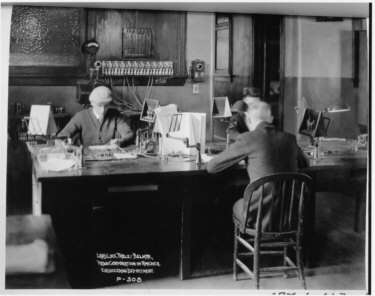
LANDLINE TABLE – BELMAR. RADIO CORPORATION OF AMERICA. ENGINEERING DEPARTMENT P-308
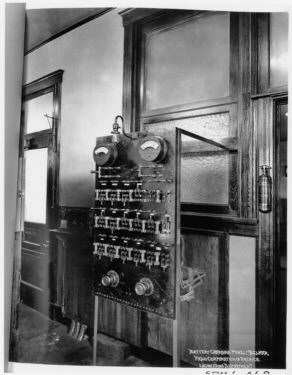
BATTERY CHARGING PANEL – BELMAR.
RADIO CORPORATION OF AMERICA.
ENGINEERING DEPARTMENT
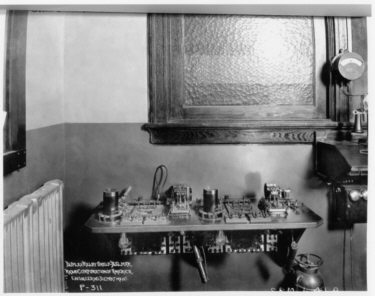
DUPLEX RELAY SHELF – BELMAR.
RADIO CORPORATION OF AMERICA.
ENGINEERING DEPARTMENT
P-311
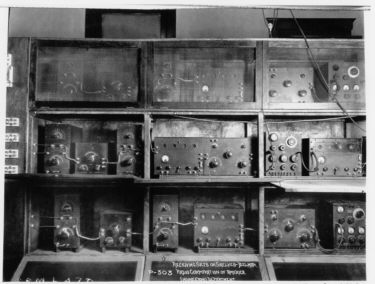
RECEIVING SETS ON SHELVES – BELMAR.
RADIO CORPORATION OF AMERICA.
ENGINEERING DEPARTMENT
P-303
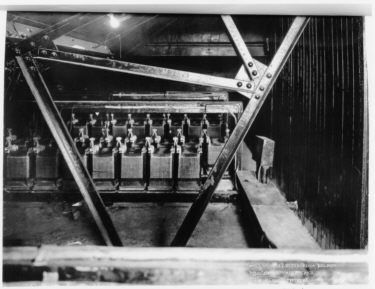
SMALL STORAGE BATTERY ROOM – BELMAR.
RADIO CORPORATION OF AMERICA.
ENGINEERING DEPARTMENT

RADIO RECEIVER SHELVES – BELMAR.
RADIO CORPORATION OF AMERICA.
ENGINEERING DEPARTMENT
P-301
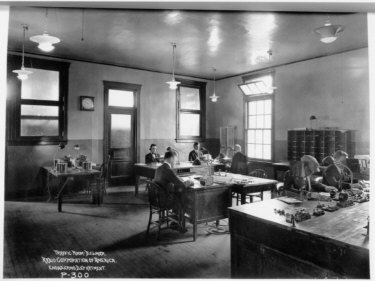
TRAFFIC ROOM – BELMAR.
RADIO CORPORATION OF AMERICA.
ENGINEERING DEPARTMENT
P-300
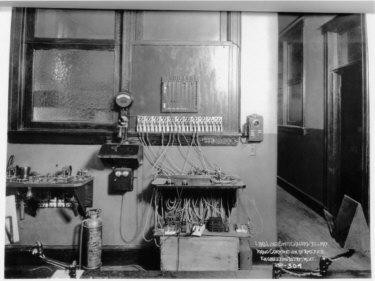
LAND LINE SWITCHBOARD – BELMAR.
RADIO CORPORATION OF AMERICA.
ENGINEERING DEPARTMENT
P-304
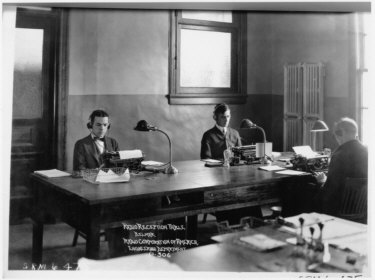
RADIO RECEPTION TABLE – BELMAR.
RADIO CORPORATION OF AMERICA.
ENGINEERING DEPARTMENT
P-306
Photos Copyright© Smithsonian Institution – posted on www.infoage.org with permission
Page created August 20, 2002
We Need Your Help! Volunteer with Us.
Join our mission to preserve historic Camp Evans and teach the public about science and history.
Sign up to join our team of volunteers and start on your own mission today.
InfoAge Science & History Museums
2201 Marconi Road
Wall, NJ 07719
Tel: 732-280-3000
info@infoage.org
webmaster@infoage.org
